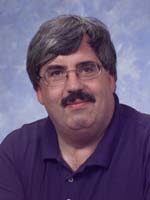An Overview of System-Level Design: Current Status, Future Possibilities
Technical Session 2
The 7th Heaven of System Level Design Keynote
Grant Martin, Cadence Fellow, Chief Technologist for the System Level Design and Verification Group Cadence Design Systems, Inc.
Abstract
System-level design has been the once and future hope for electronic design automation for a long time: from ESDA to now ESL, the takeoff is always just about to happen, yet never seems to arrive. However, the design world is changing and the conditions for a wider adoption of system-level design methods and technologies may be far riper now than in the past. We should remember, too, that 'system' extends far beyond the hardware-centric views of most of EDA, to embrace software, especially in embedded real-time products. System-level design (SLD) has been successfully applied to the design and implementation of dataflow and control algorithms in a number of signal and image processing application domains for many years. Currently, there is a lot of renewed interest in the modeling of System-on-Chip design platforms at higher levels of abstraction. For the future, there are several trends. Effective use of hardware in a software-centric world has re-awoken interest in behavioral synthesis in a new form: co-processor synthesis. New system architectures mean resurgence of interest in the co-design problem, albeit "SW-SW" co-design than "HW-SW". The desirability of bringing the HW and SW worlds together in the new discipline of system design means a closer look at developments in SW modeling and tools, such as the evolution of UML, and its linkage to EDA-based SLD.
Curriculum Vitae

Grant is a co-author of Surviving the SOC Revolution: A Guide to Platform-Based Design, 1999, and System Design with SystemC, 2002, and a co-editor of Winning the SoC Revolution: Experiences in Real Design, and UML for Real: Design of Embedded Real-Time Systems, June 2003. He co-chaired the VSI Alliance Embedded Systems study group in summer 2001. His particular areas of interest include system-level design, System-on-Chip, Platform-Based design, and embedded software.
